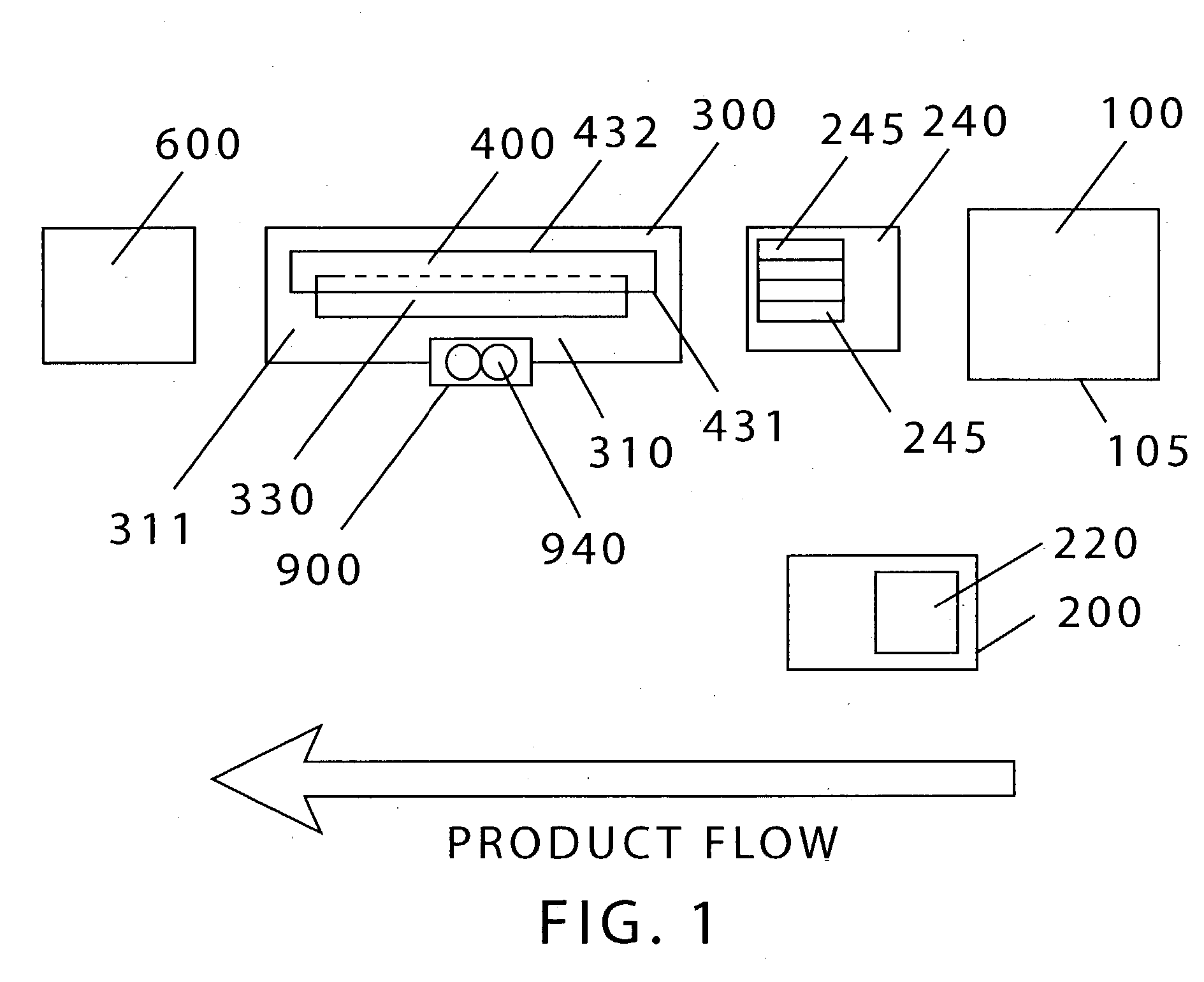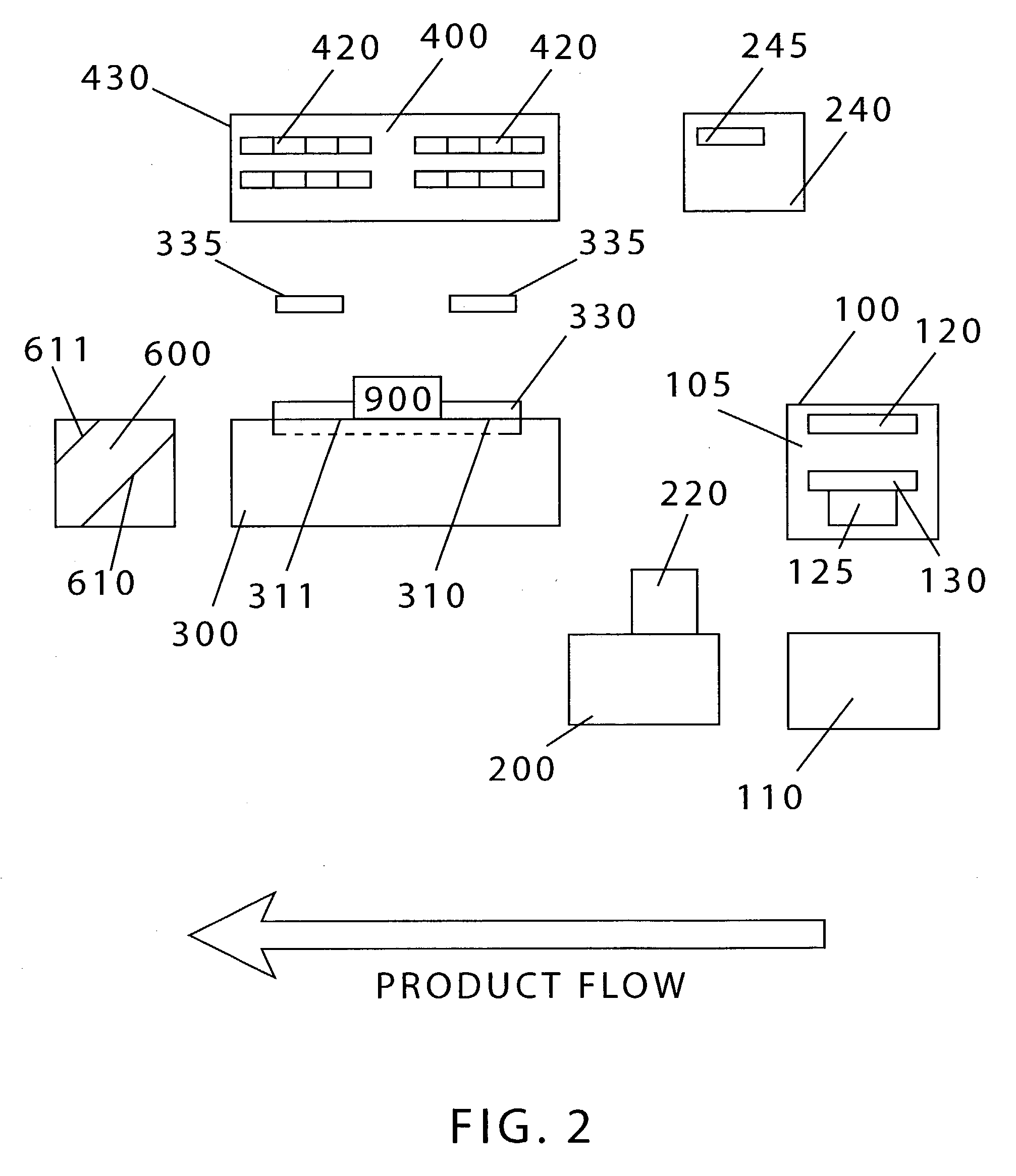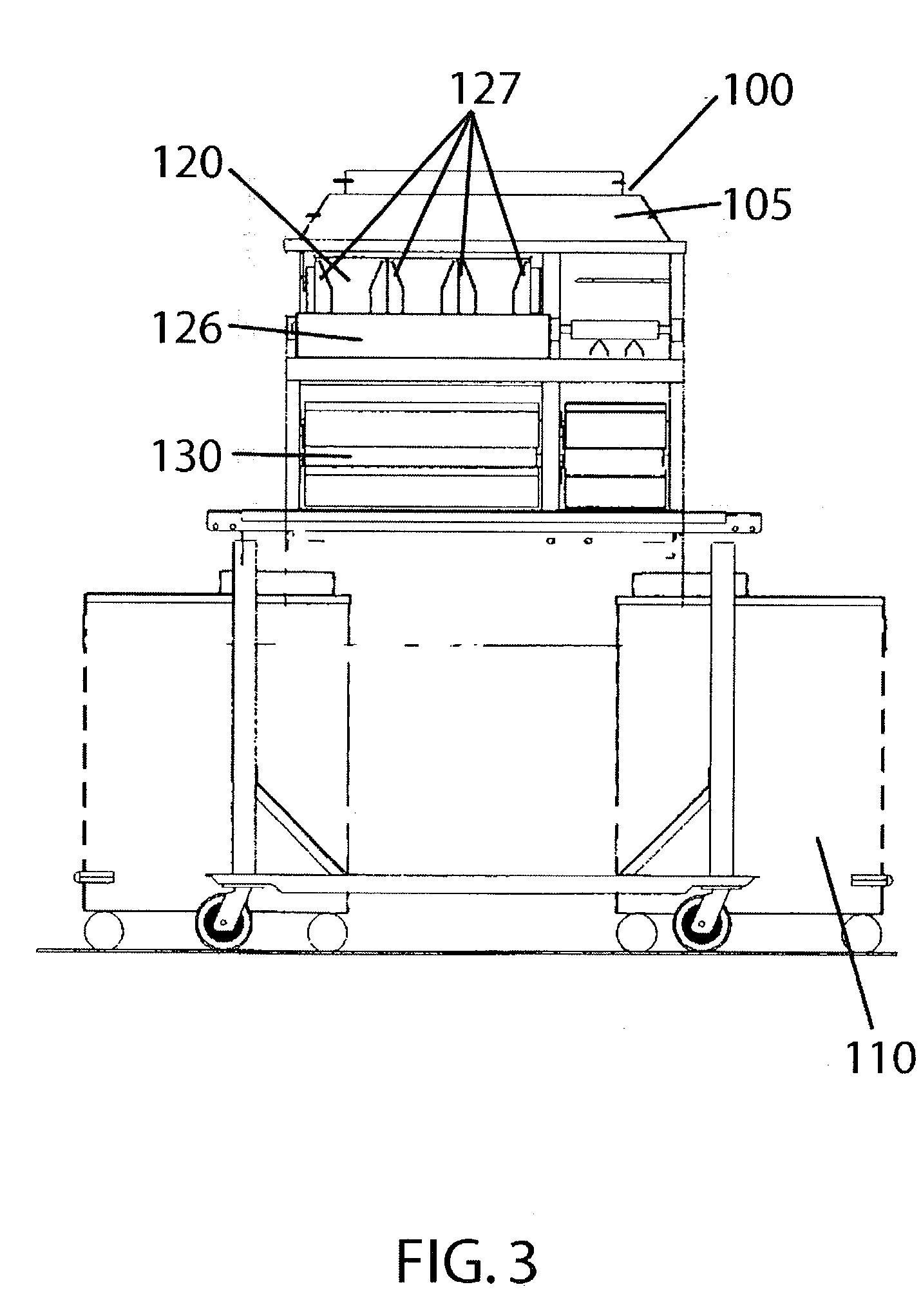Disadvantages to batch cooking include a
perception of diminished product quality and therefore reduced customer satisfaction.
Moreover, batch cooking can hinder menu flexibility as well as impede customization of individual orders (e.g. made-to-order variations of standard menu items).
This batch toasting process has been found to be disadvantageous because of the required intermediate step of removing from and then reinserting the bread product into the
plastic bag, thereby leading to a consequent increase in labor and sandwich assembly time.
Because of the length of time necessary to broil different products and the inability to broil in whole batches, inconsistencies and a lack of uniformity may exist between products of any one batch.
Moreover, the transfer from one pan to another is an inefficient and an unnecessary step that may lead to
drying, discoloration, and overall diminished product quality.
In addition, the holding cabinets used to store products of these prior-art batch cooking processes have been deficient.
Prior art holding cabinets, whether of the dry convective type or the steam cabinet type are more labor intensive, difficult to use, and potentially detrimental to product quality.
Such prior-art holding cabinets have been unable to control
humidity with precision due to the relatively large sliding or hinged
doors required to load the batch cooked products thereinto and remove the batch cooked products therefrom.
The same prior-art holding cabinets prevent different products from being held in the same unit under different conditions, thus restricting menu flexibility.
The trays or holding pans used by these holding cabinets are not however compatible with other equipment in the fast-food kitchen and consequently introduce unnecessary steps of transferring products from one pan to another.
Though this decreases labor, the meat juices from the
cooked meat product often seep into the toasted bread product adversely affecting the toasted bread product's
flavor, appearance, and texture.
Batch assembly and batch storage of sandwiches after cooking the meat product and toasting the bread product has the same advantages of decreased labor and increased efficiency as well as disadvantages of decreased product quality and customer satisfaction and limited menu flexibility.
However, the disadvantages of made-to-order sandwich assembly include decreased efficiency and uncertain product uniformity.
A common problem of batch assembly and storage is the difficulty of maintaining the final assembled sandwich at a desired temperature before its ultimate sale.
This proved to be disadvantageous as
microwave heating may lead to an undesirable, soggy taste and fail to uniformly heat the microwaved sandwich elements.
Other prior-art heating devices are deficient because they do not raise the temperature of the sandwich or sandwich ingredient fast enough, do not have the necessary speed or ease of operation for the fast-
food industry, or are cost prohibitive for a
franchise-based business model.
Of the commercially available heating devices examined, heated contact plates that provide conductive heat to a sandwich do not raise sandwich temperatures quickly enough.
Also the use of such plates on an assembly board in the fast paced environment of a fast-food kitchen is impractical.
Convection based heating devices also do not raise sandwich temperatures fast enough and negatively affect sandwich quality.
Infrared or lightwave heaters again do not raise the sandwich temperature to the desired level and are cost prohibitive.
Conventional steam cabinets do not provide the needed product quality nor do they have the required speed or ease of operation.
The use of steam as a means of heating, while known, has heretofore not provided satisfactorily uniform results, particularly with respect to heating pre-processed
food products such as
baked goods, which may become soggy when exposed to a humid, steam environment.
In prior-art steamers as well as in food holding cabinets using
convective heating, it is difficult to control or maintain
humidity at a desired level.
Moreover, since these steamers and ovens typically have relatively large sliding or hinged
doors to load
food products therein and remove the food products therefrom, heat and
humidity escape from the unit.
Additionally, these
doors introduce inefficient employee movement and wasted labor by the constant opening and closing of the doors during the assembly process of a sandwich.
And such cabinets must be placed above or beside the sandwich assembly board--introducing even more inefficiency and wasted movement.
The necessary requirements of cooking, toasting, storing, assembling, and storing again
pose inherent inefficiencies.
This can prove to be labor intensive and detrimental to product uniformity.
Whether utilizing a division of labor or a single employee walking the length of the board, the prior arrangement of holding cabinets, steam cabinets, and microwaves is plagued by inherent inefficiencies in assembling each sandwich, limiting the available methods used to assemble sandwiches and restricting menu options.
Individual workstations, however, have not been incorporated in previous kitchen arrangements because of the related increase in cost and space.
Prior-art practices of cooking, heating, assembling, storing, and serving a sandwich have not been successful in maintaining a fresh tasting sandwich, within the desired serving temperature range of 150.degree. F. to 160.degree. F, for the period of time in which a
consumer typically begins eating the sandwich, e.g. between approximately 2 to 7 minutes after purchase.
 Login to View More
Login to View More  Login to View More
Login to View More 


